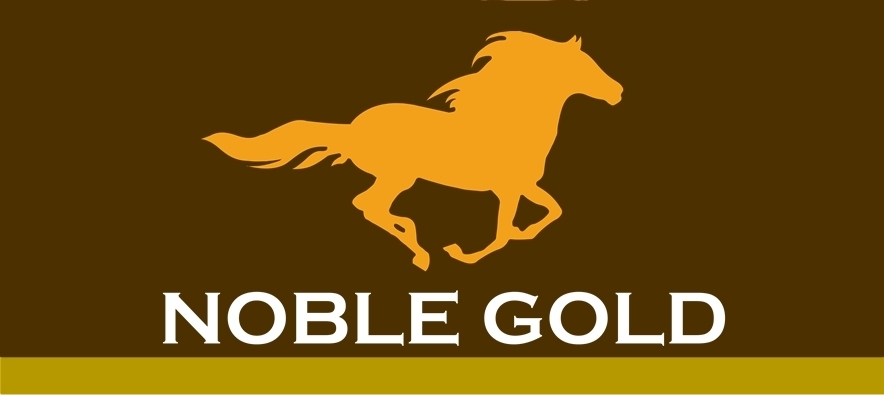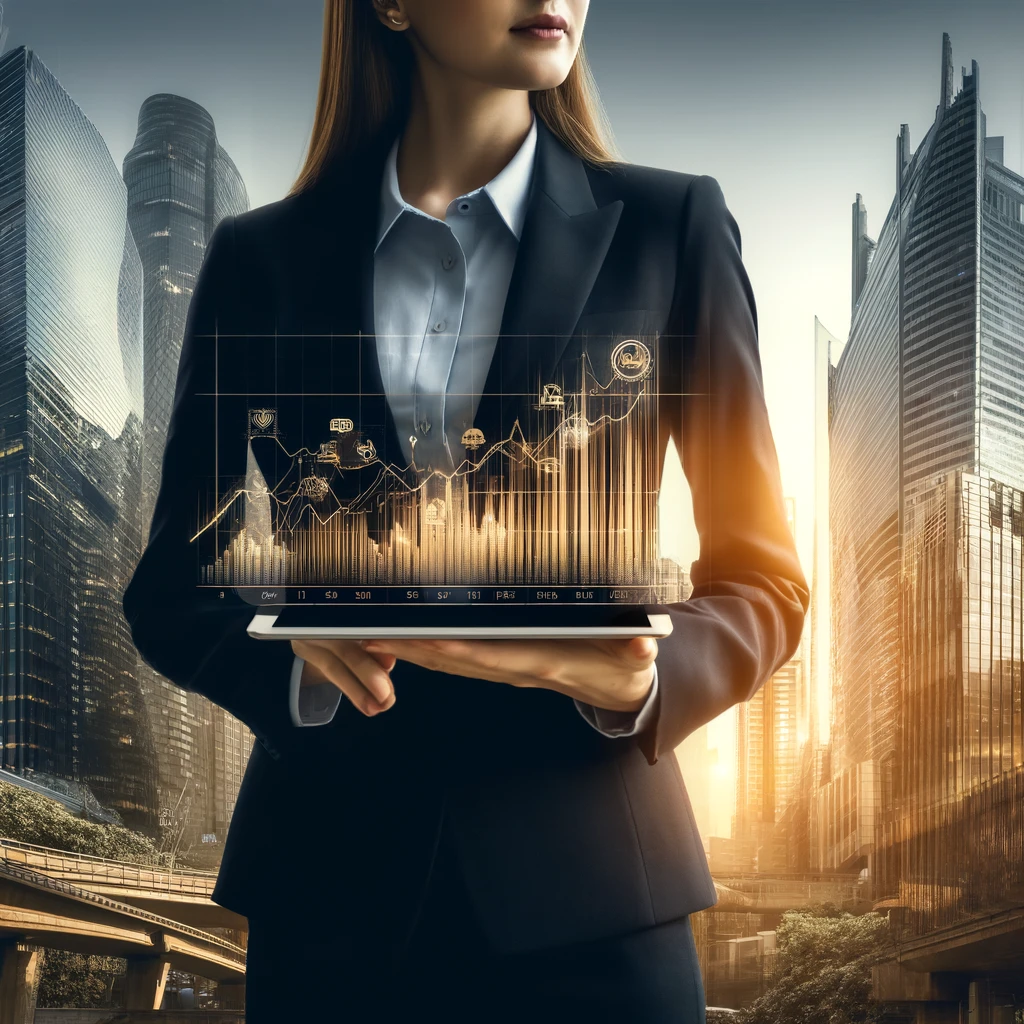Affiliate Disclosure
The owners of this website may be paid to recommend the following companies: Goldco, Augusta Precious Metals, Noble Gold Investments, and Birch Gold Group. The content on this website, including any positive reviews of the mentioned companies, and other reviews, may not be neutral or independent. We do believe in all the companies we recommend as being the most trustworthy in the business.
Investing for retirement is a crucial aspect of financial planning. While traditional IRAs offer a range of investment options, savvy investors are turning to Gold Individual Retirement Accounts (IRAs) as a means to fortify their portfolios. A Gold IRA involves holding physical gold or investing in gold-related assets within an IRA, offering unique advantages that go beyond traditional stocks and bonds.
Investing in a Gold IRA: Video
Introduction to Gold IRA
In today’s volatile and unpredictable financial landscape, investors seek safe-haven assets that can protect their wealth during economic downturns. Gold, often referred to as “the ultimate hedge,” has been a symbol of wealth and value for centuries. A Gold IRA allows individuals to capitalize on the stability and growth potential of this precious metal within the framework of a tax-advantaged retirement account.
Investing in a Gold IRA means owning gold as a significant component of your retirement portfolio. This approach goes beyond the traditional investment options, such as stocks and bonds, offering a tangible and reliable asset that can preserve wealth even in times of economic uncertainty.

Understanding the Basics of Gold Investing
Before delving into the intricacies of Gold IRAs, it is essential to grasp the fundamentals of gold investing. Gold is influenced by various factors, including supply and demand dynamics, geopolitical events, and monetary policies. Historically, gold has maintained its value, making it a sought-after asset during times of economic crisis. Additionally, gold tends to move inversely to the stock market, making it an effective diversification tool.
Gold investing goes beyond simply purchasing gold. Investors need to understand the factors that affect gold prices, such as geopolitical tensions, interest rates, and inflation. By comprehending these fundamentals, investors can make informed decisions and optimize their Gold IRA’s performance.
Advantages of Investing in a Gold IRA
Hedging against Inflation: One of the key advantages of a Gold IRA is its ability to act as a hedge against inflation. While fiat currencies may lose value over time due to inflation, gold has historically retained its purchasing power. This makes gold a valuable asset for preserving wealth and maintaining the value of your retirement savings.
Wealth Protection: Gold has stood the test of time as a store of value. Throughout history, during financial crises and geopolitical tensions, gold has retained its worth. A Gold IRA shields investors from currency devaluation and geopolitical risks, offering a safeguard for their hard-earned wealth.
Portfolio Diversification: Diversification is a crucial risk management strategy for investors. Including gold in a portfolio can reduce overall risk and volatility, especially during stock market downturns. A Gold IRA provides an opportunity to diversify beyond traditional assets and create a balanced investment mix.
Portfolio Stabilization: As a non-correlated asset, gold can act as a stabilizer during periods of market turbulence. When stocks and other assets experience significant fluctuations, gold often remains resilient, providing a buffer against market volatility.
Long-Term Growth Potential: Over the long term, gold has demonstrated an ability to appreciate in value. While short-term fluctuations are common, investors with a long-term horizon may benefit from holding gold as part of their retirement strategy.
How to Start Investing in a Gold IRA
Setting up a Gold IRA is a straightforward process, but it requires careful consideration and adherence to IRS guidelines. Here’s a step-by-step guide to getting started:
Choose a Reputable Gold IRA Custodian: Selecting the right custodian is crucial, as they will oversee the administration of your Gold IRA. Look for a custodian with a solid reputation, transparent fee structures, secure storage options, and excellent customer service.
Research and Compare Custodian Fees: Different custodians charge varying fees for their services. These fees can significantly impact your returns over time. Compare custodial fees and choose one that aligns with your financial goals.
Fund Your Gold IRA Account: Once you’ve chosen a custodian, you’ll need to fund your Gold IRA account. You can do this by either transferring funds from an existing retirement account or making a new contribution.
Choose Your Gold Investment: Deciding on the type of gold investment is crucial. Options include physical gold (bullion, coins), gold ETFs, and gold mining stocks. Each option has its pros and cons, so conduct thorough research before making a decision.
Store Your Gold Securely: If you opt for physical gold, it must be stored in a qualified storage facility. Avoid storing gold at home, as this may jeopardize its eligibility within an IRA and may incur tax penalties.
Evaluating Gold IRA Companies
Choosing the right Gold IRA company is a critical decision that can impact the success of your investment. Here are some factors to consider when evaluating Gold IRA companies:
Reputation and Track Record: Look for companies with a proven track record of excellence in the precious metals industry. Read customer reviews and testimonials to gauge the company’s reputation.
Transparent Fee Structure: Ensure that the company provides a clear and transparent fee structure. Avoid companies that hide fees or charge exorbitant rates.
Secure Storage Facilities: Verify that the company offers secure and insured storage facilities for your physical gold. The storage facility should comply with IRS guidelines for precious metals storage.
Customer Service: Exceptional customer service is crucial for a smooth Gold IRA experience. Choose a company that is responsive, knowledgeable, and supportive.
Our Top Trusted Company Picks for 2025
Our recommended Providers are researched and vetted by us and many top consumer organizations. This is the short list of the most consistent companies we could come up with. Request information from them below.
#1: GoldenCrest Metals *** Best Overall***
Our Rating: 10/10
Key Points
✅ A- BBB Rating
✅ $10,000 Minimum Investment
✅ Excellent Customer Reviews
✅ Transparency and Trust is the Main Focus
✅ All Fees Covered for the First year
✅ An Educational and Long-term Approach to Tailored Precious Metals Strategies
✅ $25,000 in FREE Silver for Qualified Accounts!
#2: Birch Gold Group ***Great Client Education ***
Our Rating: 9.9/10
Key Points
✅ Great company commitment to education and communication
✅ Impeccable customer service
✅ Silver, gold, platinum and palladium available
✅ $10,000 Minimum Investment
#3: Noble Gold Investments ***Best for Rollovers***
Our Rating: 9.9/10
Key Points
✅ One of the best no questions asked buyback programs in the industry
✅ Free delivery of your precious metals to your door at any time
✅ Over 20 years of experience in the precious metals industry
✅ Gold, silver, platinum, and palladium available.
✅ Only Sells Bullion, NO Premium or Collectible Metals
✅ Secure, exclusive storage in the
State of Texas
✅ $20,000 Minimum Investment
Call Noble Gold for your FREE Investing Kit!
1-626-684-4908
Types of Gold IRA Accounts
When investing in a Gold IRA, you have several options to consider. Each type of Gold IRA account offers unique benefits and considerations. Here are the main types:
Physical Gold IRA: A Physical Gold IRA involves holding physical gold bars or coins within the account. This option provides direct ownership of tangible assets and the reassurance of having gold in your possession.
Gold ETF IRA: Gold Exchange-Traded Funds (ETFs) track the price of gold and are traded on stock exchanges. Investing in a Gold ETF IRA offers convenience and liquidity.
Gold Mining Stocks IRA: A Gold Mining Stocks IRA involves investing in stocks of companies engaged in gold mining. This option allows exposure to the gold industry without holding physical gold.
Gold Bullion and Coins IRA: Investing in gold bullion and coins offers a tangible and tangible asset within your Gold IRA. Bullion and coins are held in a secure storage facility.
Gold IRA Rules and Regulations: Ensuring Compliance for Optimal Benefits
As with any retirement account, Gold IRAs are subject to a set of rules and regulations established by the Internal Revenue Service (IRS). Complying with these guidelines is of utmost importance to preserve the tax-advantaged status of your Gold IRA. Understanding the rules in detail will enable you to make informed decisions and maximize the benefits of this unique investment vehicle.
Contribution Limits: Maximizing Your Savings Potential
One of the key considerations for any IRA, including a Gold IRA, is the annual contribution limit. As of 2021, individuals under the age of 50 can contribute up to $6,000 per year to their IRA accounts. For those aged 50 and older, the limit is increased to $7,000 per year, allowing catch-up contributions.
Understanding the contribution limits is crucial for planning your retirement savings effectively. By contributing the maximum allowed amount, you can take full advantage of the tax benefits and potentially grow your retirement nest egg at an accelerated pace.
Distribution Requirements: Navigating Required Minimum Distributions
For investors with Traditional Gold IRAs, it’s important to be aware of Required Minimum Distributions (RMDs). Starting at age 72, the IRS mandates that account holders must begin taking minimum distributions from their Traditional Gold IRA accounts. These distributions are calculated based on the account balance and life expectancy, ensuring that the funds are gradually withdrawn over time.
On the other hand, Roth Gold IRAs offer a significant advantage in terms of RMDs. Unlike Traditional IRAs, Roth IRAs do not have RMD requirements during the account owner’s lifetime. This means you can enjoy greater flexibility in managing your withdrawals, potentially leaving more funds to grow tax-free for a longer period.
Prohibited Transactions: Navigating the Dos and Don’ts
To maintain the tax-advantaged status of your Gold IRA, it’s essential to avoid prohibited transactions. The IRS sets strict guidelines on what can and cannot be done with the assets held within a Gold IRA.
One of the most critical prohibited transactions is self-dealing, which involves using the IRA’s assets for personal gain or benefit. Additionally, engaging in transactions with disqualified persons, such as immediate family members, can also lead to penalties and adverse tax consequences.
It’s crucial to work with a reputable custodian or financial advisor to ensure you fully understand the prohibited transactions and avoid any inadvertent violations. Staying compliant will help you preserve the tax benefits and safeguard your retirement savings.

Precious Metals Eligibility: Selecting the Right Gold Assets
When investing in a Gold IRA, not all precious metals are eligible for inclusion. The IRS has specific criteria regarding the types of gold coins and bars that are allowed within the IRA.
To be eligible, gold coins and bars must meet certain purity and authenticity requirements. It’s essential to conduct thorough research or consult with a knowledgeable advisor to ensure you select the right gold assets that align with IRS guidelines.
By adhering to the precious metals eligibility criteria, you can confidently invest in gold assets that will retain their tax-advantaged status and contribute to the long-term growth of your Gold IRA.
Seeking Professional Guidance: The Key to Successful Gold IRA Management
Navigating the rules and regulations surrounding Gold IRAs can be complex. To make the most of this investment opportunity, seeking professional guidance is highly recommended. Financial advisors with expertise in retirement planning and precious metals can provide invaluable insights and ensure your Gold IRA remains compliant with IRS guidelines.
In addition to professional advice, staying informed about any changes to the rules and regulations is essential. The IRS may update guidelines periodically, and being aware of these changes will help you make necessary adjustments to your investment strategy.
In conclusion, understanding and adhering to the rules and regulations governing Gold IRAs is paramount for optimizing the benefits of this unique retirement investment option. By maximizing your contributions, managing distributions wisely, avoiding prohibited transactions, and selecting eligible precious metals, you can build a solid foundation for a secure and prosperous retirement. Embrace the opportunity to invest in a Gold IRA and secure your financial future with the timeless allure of precious metals.
Limited Time offer!
Managing Risks in Gold IRA Investments
While gold is considered a safe-haven asset, no investment is entirely risk-free. Here are some strategies to manage risks in your Gold IRA:
Set Clear Investment Goals: Determine your financial goals and risk tolerance before investing. Having a clear plan in place will help you make informed decisions.
Regularly Monitor Your Portfolio: Stay updated on the performance of your Gold IRA and adjust your strategy as needed. Periodic rebalancing can help maintain your desired asset allocation.
Avoid Emotional Decision-Making: Avoid making investment decisions based on emotions, such as fear or greed. Stick to your long-term plan and avoid reacting to short-term market fluctuations.
Stay Informed: Keep abreast of economic and geopolitical developments that could impact gold prices. Informed decision-making is key to successful gold investing.
Tax Implications of Gold IRA Investments
Understanding the tax implications of your Gold IRA is essential for effective financial planning. Here are some key tax considerations:
Tax-Deferred Growth: Contributions to a Traditional Gold IRA are tax-deductible, and earnings grow tax-deferred until withdrawal.
Tax-Free Growth (Roth IRA): Roth Gold IRA contributions are made with after-tax dollars, but qualified withdrawals in retirement are tax-free.
Taxable Distributions: Traditional Gold IRAs require paying income taxes on distributions taken during retirement.
Gold-Related Taxes: Certain states impose sales tax on precious metals purchases. Be aware of any applicable taxes before investing in gold.
Diversification: Combining Gold with Other Assets
A well-diversified investment portfolio is the cornerstone of successful financial planning. Diversifying your investments across various asset classes can help you manage risk and optimize returns. When it comes to your Gold IRA, incorporating other assets alongside gold can enhance the benefits of diversification and create a robust foundation for your retirement savings. Here’s a closer look at how you can effectively combine gold with other assets to achieve a well-rounded and resilient investment portfolio:
1. Stocks and Bonds: Balancing your Gold IRA with a mix of stocks and bonds is a proven strategy for diversification. Stocks offer the potential for significant growth and capital appreciation, while bonds provide stability and income generation. By blending gold with these traditional assets, you can capitalize on equity growth during bullish market periods while relying on gold’s protective qualities during market downturns. This balanced approach can help mitigate risk and offer steady returns over the long term.
2. Real Estate: Investing in real estate can be a valuable addition to your Gold IRA. Real estate properties, especially residential properties and commercial real estate, have historically demonstrated consistent appreciation and can act as a hedge against inflation. Moreover, real estate investments often generate rental income, providing a source of passive income during retirement. By including real estate assets in your portfolio, you can further diversify and strengthen your financial position.
3. Precious Metals: Beyond gold, other precious metals like silver, platinum, and palladium can be attractive diversification options. Each precious metal has unique characteristics and tends to respond differently to various market conditions. For example, while gold is renowned as a safe-haven asset, silver is known for its industrial uses and can exhibit higher volatility. Platinum and palladium, on the other hand, are widely used in the automotive industry and have their own supply-demand dynamics. Including a mix of precious metals in your Gold IRA can broaden your exposure to the commodities market and enhance your portfolio’s resilience.
When blending gold with other assets, it’s essential to strike the right balance that aligns with your risk tolerance, investment goals, and time horizon. Diversification should not only be limited to different asset classes but also to assets with low correlations to one another. This way, you can effectively spread risk and potentially optimize returns across various economic scenarios.
As always, before making any investment decisions, consult with experienced financial advisors who can tailor a diversified investment strategy that suits your unique financial circumstances. A well-thought-out and diversified Gold IRA can play a pivotal role in securing your financial future and ensuring a comfortable retirement.
Economic Factors Affecting Gold Prices
As a Gold IRA investor, understanding the economic factors that influence gold prices is paramount. Gold’s value is intricately linked to various economic dynamics, and being aware of these factors can help you make informed decisions when managing your Gold IRA investments. Let’s delve deeper into the key economic factors that shape the price of gold and explore real-life examples to illustrate their impact:
1. Inflation and Deflation:
Gold has long been recognized as a hedge against inflation, making it a sought-after asset during periods of rising prices. In times of inflation, the purchasing power of fiat currencies erodes, leading investors to seek safe-haven assets like gold to preserve their wealth. As a result, gold prices tend to rise during inflationary periods as demand for the precious metal surges.
Real-Life Example: During the global financial crisis of 2008, central banks around the world implemented monetary stimulus measures to combat deflationary pressures. These measures, such as quantitative easing and low-interest rates, led to concerns of potential inflation. In response, investors flocked to gold as a safeguard against currency devaluation, causing gold prices to rally to record highs.
2. Interest Rates:
Interest rates play a crucial role in determining gold prices. Lower interest rates reduce the opportunity cost of holding non-yielding assets like gold. When interest rates are low, the returns on fixed-income investments become less attractive, prompting investors to seek alternative safe-haven assets like gold.
Real-Life Example: In the aftermath of the 2008 financial crisis, central banks globally adopted accommodative monetary policies, slashing interest rates to stimulate economic growth. As a result, the demand for gold surged as investors sought refuge from low-yield bonds and cash holdings, driving up gold prices.
3. Currency Movements:
Gold often exhibits an inverse relationship with the US dollar. Since gold is priced in US dollars on the global market, a weaker dollar makes gold cheaper for international buyers, leading to increased demand and higher prices.
Real-Life Example: In recent years, the US dollar experienced fluctuations due to various economic and geopolitical events. For instance, during the trade tensions between the US and China, uncertainty surrounding the dollar’s strength led investors to seek the safety of gold, causing its price to rise.
4. Geopolitical Events:
Geopolitical tensions and uncertainties can have a significant impact on gold prices. In times of political instability, investors perceive gold as a safe-haven asset, leading to heightened demand and upward price movements.
Real-Life Example: In 2020, the outbreak of the COVID-19 pandemic created widespread uncertainty in global financial markets. Investors turned to gold as a safe store of value amid the economic disruptions caused by lockdowns and travel restrictions. The surge in demand for gold during this period led to a considerable price increase.
Being aware of these economic factors can help you navigate the complexities of the gold market and make strategic decisions regarding your Gold IRA. Remember that gold prices can be influenced by a myriad of factors, and it’s crucial to stay informed and work with knowledgeable financial advisors to optimize your Gold IRA’s performance in line with your long-term retirement goals.
Gold Storage Options for IRAs
When it comes to investing in physical gold within your IRA, ensuring safe and secure storage is of utmost importance. The precious nature of gold requires prudent storage solutions that comply with IRS regulations and provide peace of mind. As a Gold IRA investor, you have several storage options to choose from, each with its own advantages and considerations. Here are the main gold storage options available for IRAs:
Qualified Depository:
A qualified depository is an IRS-approved facility specifically designed to meet stringent storage standards for precious metals. These depositories are equipped with state-of-the-art security measures, including advanced surveillance systems, on-site guards, and controlled access. By using a qualified depository, you can be confident that your gold is held in a secure and protected environment, reducing the risk of theft and damage.
Advantages:
- Unparalleled Security: Qualified depositories prioritize the safety and security of your precious metals, employing robust security protocols to safeguard your assets.
- IRS Compliance: Storing your gold in a qualified depository ensures that your Gold IRA remains compliant with IRS regulations, preserving its tax-advantaged status.
- Professional Management: Qualified depositories are experienced in handling precious metals, minimizing the risk of mishandling or loss.
Considerations:
- Storage Fees: Qualified depositories charge storage fees for their services, which can vary depending on the quantity of gold held and the level of security provided.
- Accessibility: While qualified depositories offer excellent security, accessing your physical gold may require coordination with the custodian and may not be as immediate as home storage.
Home Storage:
While technically allowed, storing gold at home within an IRA is generally discouraged due to potential tax implications and security concerns. Home storage presents several risks, including the vulnerability to theft and damage, as well as the potential to disqualify your gold from the tax-advantaged status of your IRA.
Advantages:
- Immediate Access: Storing gold at home allows for direct and immediate access to your physical assets.
Considerations:
- Security Risks: Storing gold at home exposes your assets to the risk of theft or damage, potentially compromising your retirement savings.
- Tax Implications: Home storage may lead to tax implications if not done in compliance with IRS regulations, potentially resulting in tax penalties and the disqualification of your Gold IRA.
Third-Party Custodian:
Most Gold IRAs utilize third-party custodians to handle the logistics of gold storage on behalf of the account holder. These custodians work with qualified depositories to ensure secure storage and proper management of your gold assets.
Advantages:
- Professional Management: Third-party custodians are experienced in handling precious metals and are equipped to manage the storage and administration of your Gold IRA efficiently.
- Regulatory Compliance: Working with a third-party custodian helps ensure that your Gold IRA remains in compliance with IRS regulations.
Considerations:
- Custodial Fees: Third-party custodians charge fees for their services, which may include storage fees and administrative costs.
- Trust and Reputation: It is essential to choose a reputable and trustworthy custodian to safeguard your gold assets effectively.
As an investor, the storage option you choose will depend on your risk tolerance, preferences, and long-term goals. While qualified depositories offer the highest level of security and IRS compliance, utilizing a third-party custodian can provide professional management and regulatory compliance. Home storage, on the other hand, should be approached with caution due to the potential risks involved.
Ultimately, ensuring safe and secure storage for your gold assets is an integral part of managing your Gold IRA effectively and safeguarding your retirement savings.
The Future Outlook for Gold
As with any investment, it’s essential to consider the future outlook for gold. While no one can predict the future with certainty, several factors suggest a positive outlook for the precious metal:
Continued Global Uncertainty: Ongoing geopolitical tensions and economic uncertainties may drive demand for safe-haven assets like gold.
Currency Devaluation: Inflationary pressures and extensive monetary stimulus could potentially lead to currency devaluation, benefiting gold prices.
Emerging Market Demand: Growing demand for gold from emerging economies may contribute to price appreciation.
Supply Constraints: Limited gold supply and challenges in gold mining may support higher gold prices.
Common Misconceptions about Gold IRAs
Despite the numerous benefits of Gold IRAs, several misconceptions persist. Here are some common myths debunked:
Gold is a Risky Investment: While all investments carry some degree of risk, gold’s historical performance has demonstrated its value as a hedge against risk.
Gold Prices Always Increase: Gold prices can fluctuate, just like any other asset. Short-term price movements should not deter investors from the long-term value of gold.
Physical Gold is a Burden: Some investors perceive owning physical gold as cumbersome. However, with qualified storage facilities, the process is streamlined and secure.
Comparing Gold IRA with Other Retirement Plans
Understanding how a Gold IRA compares to other retirement plans is essential for informed decision-making:
Traditional IRA: A Traditional IRA includes a range of investment options, while a Gold IRA offers the diversification and security of tangible assets.
Roth IRA: A Roth IRA offers tax-free growth, making it a powerful retirement savings tool. However, it lacks the physical asset component of a Gold IRA.
401(k): A 401(k) is an employer-sponsored retirement plan that typically includes a mix of mutual funds and other investments. A Gold IRA offers an opportunity for greater diversification.
Best Practices for Successful Gold Investing
As you embark on your Gold IRA journey, consider the following best practices for successful gold investing:
Educate Yourself: Knowledge is your best ally. Take the time to learn about the gold market, economic factors affecting gold prices, and Gold IRA regulations.
Work with Reputable Professionals: Consult with experienced financial advisors and gold experts who can guide you through the process.
Diversify Your Holdings: Combine gold with other assets to create a well-balanced and resilient investment portfolio.
Stay Committed to Your Strategy: Avoid impulsive decisions based on short-term market fluctuations. Stay focused on your long-term investment strategy.
Regularly Review Your Portfolio: Periodically assess your Gold IRA’s performance and adjust your investment allocations as needed.
Yes, gold is considered a safe-haven asset that can protect your retirement savings from market volatility and inflation.
Yes, you can transfer or rollover funds from your traditional IRA, Roth IRA, or 401(k) into a Gold IRA without incurring tax penalties.
Look for a custodian with a solid track record, positive customer reviews, transparent fee structures, and secure storage facilities.
Yes, the IRS has specific requirements for the purity and authenticity of gold coins and bars allowed in a Gold IRA.
Yes, you can include physical gold bars and coins in your Gold IRA, but they must be held in a qualified storage facility.
Historically, gold has shown resilience during economic downturns, making it a reliable hedge against financial crises.
Taking physical possession of gold from your Gold IRA may trigger tax consequences and is generally discouraged.
Gold can act as a diversifier, reducing overall portfolio risk and providing a buffer against market fluctuations.
Like any investment, the value of gold can fluctuate, but its historical performance suggests it can preserve wealth over the long term.
Regularly review your Gold IRA statements and keep abreast of economic factors that influence gold prices.

Conclusion: Embracing the Golden Opportunity
Investing in a Gold IRA offers a compelling means to diversify and safeguard your retirement savings. By including precious metals like gold in your portfolio, you can better withstand market uncertainties and inflationary pressures. Remember to conduct thorough research, choose a reputable custodian, and stay informed about economic indicators affecting gold prices. With careful planning and a long-term perspective, your Gold IRA can shine as a beacon of financial security.











